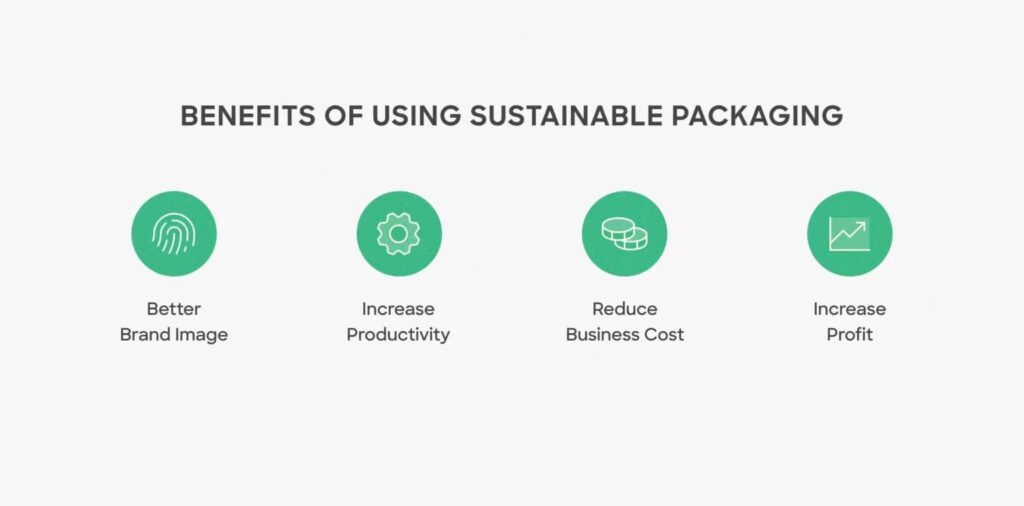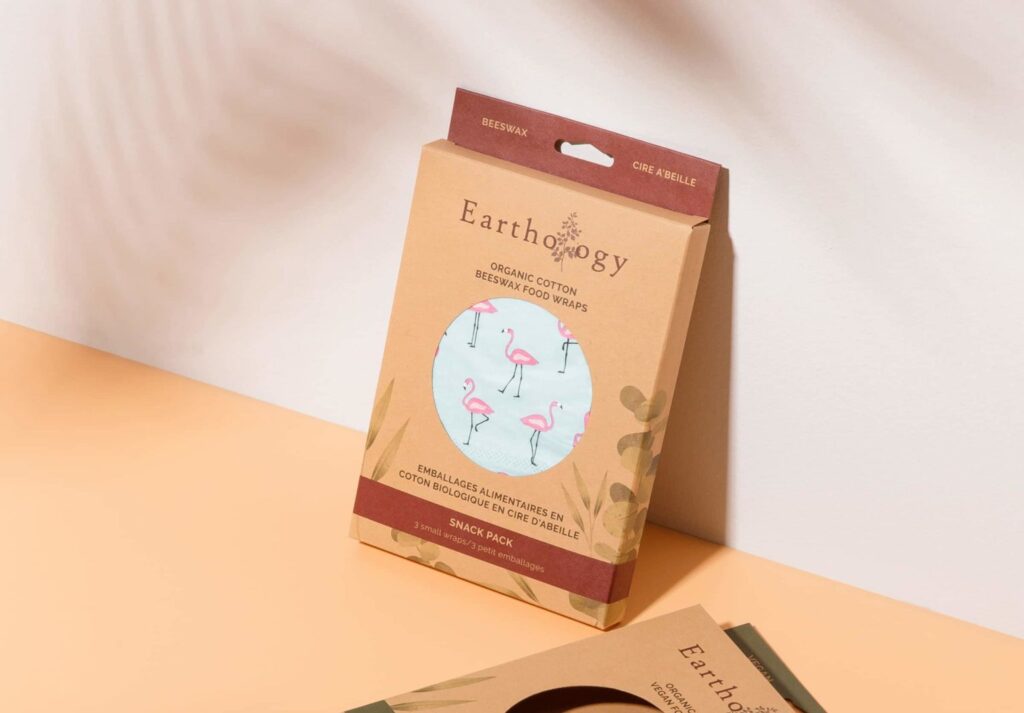Zaradi vse večjih okoljskih skrbi se podjetja vse bolj obračajo k
okoljska embalaža da bi zmanjšali svoj ekološki odtis. Dejansko vse več potrošnikov daje prednost podjetjem, ki dokazujejo takšno okoljsko odgovornost. Spodaj si oglejte, kako lahko uporaba okoljske embalaže pomaga zmanjšati količino odpadne embalaže.

1: Razumevanje okoljske embalaže
Okoljska embalaža vključuje uporabo okolju prijaznih materialov in proizvodnih metod za zmanjšanje vpliva embalaže izdelkov na okolje. To lahko pomeni uporabo biorazgradljivih materialov, zmanjšanje celotne količine uporabljenih materialov in celo izbiro oblik, ki spodbujajo ponovno uporabo.
2: Izbira biorazgradljivih materialov
Izbira biorazgradljivih materialov – tistih, ki se lahko naravno razgradijo in vrnejo v okolje – lahko drastično zmanjša količino odpadkov, ki nastanejo pri pakiranju. Razmislite o prehodu na embalažo iz materialov, kot so recikliran papir, biorazgradljiva plastika ali rastlinski materiali, ki se sčasoma naravno razgradijo.
3: Uporaba embalaže za večkratno uporabo
Ustvarjanje embalaže, ki jo lahko vaše podjetje ali potrošnik ponovno uporabi, je učinkovit način za zmanjšanje količine odpadkov. Primeri so trdne škatle, ki jih je mogoče vrniti in ponovno uporabiti, posode za ponovno polnjenje za izdelke, kot so izdelki za osebno nego, ali oblikovanje embalaže izdelkov, ki ima sekundarno funkcijo po razpakiranju.
4: Zmanjšanje celotne porabe materiala
Preprosto povedano, uporaba manjšega materiala v embalaži vodi do manjšega števila odpadkov. Odločite se za minimalistične zasnove, ki zagotavljajo potrebno zaščito brez odvečnih materialov. Že majhne spremembe, kot je zmanjšanje debeline embalažnih materialov ali optimizacija velikosti embalaže, da se prilega izdelku, imajo lahko pomemben vpliv.
5: Uporaba recikliranih materialov
Uporaba recikliranih materialov za embalažo ne le izkorišča obstoječe vire, temveč tudi zmanjšuje povpraševanje po novih, deviških materialih, s čimer prihranite energijo in zmanjšate emisije. Iščite materiale z visokim deležem recikliranih izdelkov, kar pomeni, da so večinoma izdelani iz recikliranega blaga.

6. Naše možnosti za zmanjšanje vpliva plastike na okolje in zagotavljanje trajnostnih rešitev za embalažo
Z napredkom tehnologije in inovacijami alternativne, trajnostne sodobne embalaže lahko podjetja in potrošniki začnejo sprejemati ustrezne ukrepe za zmanjšanje vpliva prekomerne embalaže na okolje in preidejo na embalažo brez odpadkov.
Pri Taiwei Package je naše poslanstvo zagotoviti rešitve Pozitivno morate vplivati na okolje z ekološka embalaža:
Odgovorno pridobivanje materialov – Uporabljamo vire iz certificiranih obratov, ki uporabljajo trajnostne prakse, da zagotovimo, da so vsi materiali, uporabljeni v projektih, obnovljivi in optimizirani.
Čista proizvodnja – Med proizvodnjo uporabljamo čisto, obnovljivo energijo in združujemo tiskarska opravila, da zmanjšamo potrebo po tiskarskih listih. Naši obrati tudi reciklirajo, ponovno uporabljajo in kompostirajo vse odpadke, povezane s proizvodnjo.
Oblikovanje in inženiring – Vaše projekte prilagajamo trajnostnim na vsakem koraku, od proizvodnje do odstranjevanja. Ne glede na to, ali uporabljate manj embalaže, manj črnila ali se odločite za uporabo več recikliranih materialov, PakFactory ponuja številne trajnostne modele embalaže. Ponujamo tudi alternativne, trajnostne embalažne materiale, črnila in zaključne obdelave, da zagotovimo učinkovito recikliranje, ki prispeva h krožnemu gospodarstvu.
Ogljično nevtralna logistika in ladijski promet – Zavezani smo k doseganju ogljično nevtralnega pošiljanja z optimiziranim načrtovanjem poti, pošiljkami v razsutem stanju in pakiranjem agregatov.
Izpolnitve – Ponujamo rešitve za zmanjšanje delovno intenzivnih in potratnih procesov z upoštevanjem 3PL in avtomatiziranih sistemov pakiranja za povečanje učinkovitosti.
Recikliranje in odpadki – Vse naše storitve zagotavljajo odgovorno in enostavno odstranjevanje odpadkov ob koncu življenjske dobe ter prispevajo k krožnemu gospodarstvu!
Pogosta vprašanja:
1. Ali ni okoljska embalaža dražja?
Čeprav so nekateri okolju prijazni materiali lahko dražji na začetku, mnoga podjetja ugotavljajo, da dolgoročne koristi, kot so nižji stroški odlaganja odpadkov, izboljšana podoba blagovne znamke in večja zvestoba strank, odtehtajo začetne stroške.
2. Ali je lahko vsa embalaža izdelana iz biorazgradljivih materialov?
Čeprav je na voljo široka paleta biorazgradljivih embalažnih materialov, ima vsak svoje specifične lastnosti in uporabo. Pomembno je izbrati materiale, ki ustrezajo specifičnim zahtevam vaših izdelkov.
3. Ali je okoljska embalaža videti manj profesionalna ali privlačna?
Zelena embalaža je zagotovo lahko profesionalna in privlačna. Pravzaprav mnogi kupci cenijo preprosto, naravno estetiko okolju prijazne embalaže.
4. Ali je težko preiti na okoljsko embalažo?
To je lahko proces, vendar je s skrbnim načrtovanjem in morebitnim strokovnim vodstvom prehod na zeleno embalažo vsekakor izvedljiv – in zelo verjetno se splača!
5. Ali okoljska embalaža resnično kaj spremeni?
Absolutno! Že majhne spremembe embalaže lahko v velikem obsegu znatno zmanjšajo količino odpadkov, onesnaževanja in porabo naravnih virov.
Uvajanje bolj zelenih praks pakiranja je hkrati nenehen izziv in priložnost za izboljšave. Z razumevanjem osnov zelene embalaže se lahko pametno odločite glede embalažnih materialov, oblikovanja in odstranjevanja, s čimer zmanjšate količino odpadkov in spodbujate bolj zdrav planet. Ne glede na velikost vašega podjetja lahko koraki k zeleni embalaži pomembno vplivajo – koristijo ne le okolju, temveč tudi vašemu dobičku in podobi blagovne znamke.


